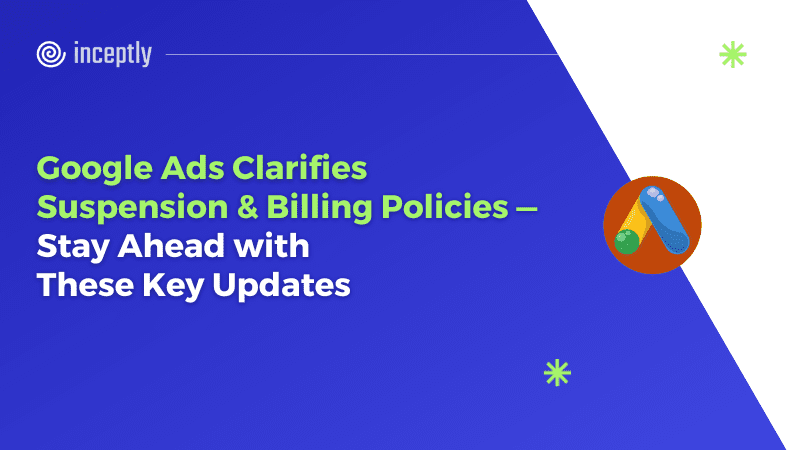
Google has recently updated several of its policy pages related to account suspensions, billing and payments, misrepresentation, and abuse of the ad network. These updates are focused on improving clarity, organization, and readability—not changing how policies are enforced.
Here’s a quick breakdown of what’s new and important:
✅ Clearer guidelines on account suspensions
Staying compliant just got easier to understand.
Google has reorganized the Account Suspensions overview to help advertisers clearly see what can trigger a suspension. Whether it’s a serious policy violation, suspicious activity, or billing-related issues, the rules are now explained more clearly. You’ll also find details on how and when Google will issue warnings and how the appeals process works.
Check out the full announcement here.
💳 Billing & payment suspensions explained
Transparency around payment issues and how to resolve them.
The updated billing section outlines why accounts might be suspended due to payment-related concerns—like chargebacks, unpaid balances, or promotional code misuse. Google now requires identity and payment method verification for appeals and has shared exactly what documentation is needed and how the process works.
Check out the full announcement here.
🚫 Stricter clarity on misrepresentation policies
No room for misleading ads or shady tactics.
Google now gives more detailed examples of what it considers misrepresentation. From impersonating brands to clickbait tactics and dishonest pricing, the rules are designed to protect users and keep the platform trustworthy. These clearer guidelines help advertisers avoid mistakes that could lead to a suspension.
Check out the full announcement here.
⚠️ What counts as abusing the ad network
Make sure your ads and site aren’t raising red flags.
This section explains unacceptable behaviors like hosting malware, linking to compromised sites, or manipulating ad content to bypass detection. Google also lists actions that give advertisers an unfair advantage or violate spam policies—now with clearer explanations and examples.
Check out the full announcement here.
No new enforcement, just more transparency
According to Google, these updates are focused on communication, not enforcement. The goal is to help advertisers understand the rules better, reduce confusion, and make it easier to stay compliant.
For full details, check out Google’s updated policy pages or contact your Google Ads rep.
Want more content like this?
Don’t miss out on the latest news and updates from the world of Direct Response advertising! Subscribe to our newsletter today 👇
Want to brainstorm with our team on new ways to scale your business with YouTube Ads (and other performance video platforms)?
Join us for a free YouTube ad brainstorming session:
Like this post? Let's continue the conversation!
Get in touch with us by shooting us a quick email or tagging us on LinkedIn or Instagram, and sharing your thoughts. Your feedback helps us keep our blog relevant and interesting.
Get Our Newsletter
Need Help?
Get in touch with us for an insightful evaluation of your ads + actionable tips to help amp up your direct response revenue



